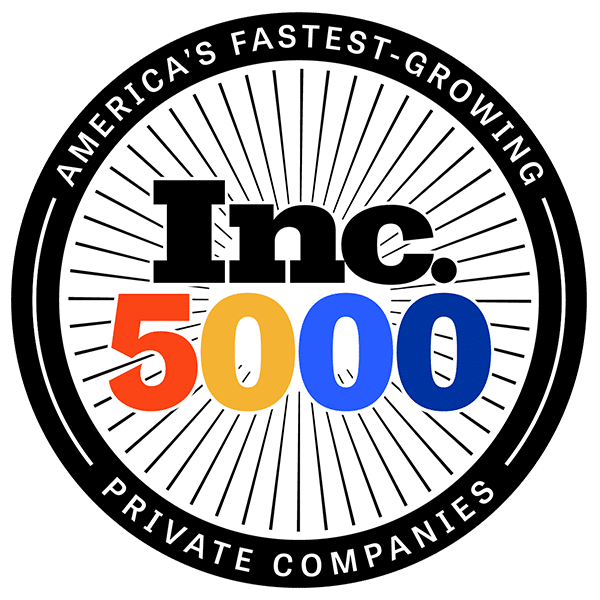What You Should Know Before Picking Your Next Site Search Provider
Each search provider has its strengths and weaknesses. Which one works for you depends on how your store operates and what your needs are.

You’re there.
You’re switching your ecommerce site search provider and trying to find the best solution out there.
And we get it. It’s no fun.
How Do You Tell Search Providers Apart?
You’re doing what most ecommerce sites do. As you compare each competitor’s features, you’re trying to determine which one will give you the most bang for your buck.
If so, you might be setting yourself up for another bad experience.
1.) It’s near impossible to know what every solution is fully capable of doing. There’s not a single provider with a nitty-gritty detailed list of what they do and don’t do under every circumstance.
2.) Since every ecommerce search provider is a SaaS solution, what is true today, won’t be tomorrow. So, even if a list did exist, it’s out of date and full of errors.
Instead of going through this exhausting exercise, there’s a more valuable approach.
There are three stages every ecommerce site goes through when choosing a 3rd party search provider:
- How do we get it?
- What can we do with it?
- How much does it cost?
Before We Get Into the List, Let’s Be Honest.
We know, we haven’t made it easy for you.
It’s true that all of our marketing starts to look the same after awhile. We also know that once you’ve sat through a few demos, those begin to sound the same as well.
Truthfully, when it comes to ecommerce on-site search, nearly every solution out there has a pretty good product. All of them are capable of delivering relevant search results and each has its strengths and weaknesses.
The key difference is how the search provider gets you there. And which one works for you depends on how your store operates and what your needs are.
Focus on discovering which search solution is the best fit. Not who has the “best” features.
You very well could pick the search provider that checks everything on your list and has the best price. But if they’re a bad fit… then, well, it’s obvious, right?
If it’s a bad fit, it doesn’t matter how nice of a search solution it is. A bad fit is a bad fit.
That’s what this list is. It’s everything you need to ask yourself and the search provider to truly find the best solution for your store.
(Disclaimer: sometimes that will be Searchspring, other times, it won’t be. That’s okay by us. We want to provide the best for our clients and sometimes that means pointing them in another direction.)
How Do I Get The Search Tool on My Site?
Ask yourself: “Do I need human customer service or will a software-only search solution work?”
One primary difference between search providers is those who include a team of experts and those who don’t.
Some providers include white-glove integration and on-going support.
Other search providers don’t. They’ll give you developer docs and call it a day.
Neither is necessarily better than the other. It comes down to what you need from the search solution. Do you want help, or are you a DIY’er?
Hold that answer for just a moment. Here’s how you can know for sure.
Do You Have Data Issues?
All search solutions work with your data. Some grab your data feed. Others hook into your platform’s API. Others scrape your data in a variety of ways.
How a search solution grabs your data is important. What they do with it is even more important.
- How straightforward is your data?
- Is it perfect, or do you have a few issues?
- If it’s not perfect, how will that “imperfect” data be used by the search solution?
- Will imperfect data be ignored?
- Will bad data throw an error?
- Will all data, regardless of quality, be crammed through, breaking the shopper experience?
Furthermore, if there are issues, who fixes those issues? If you’re left on your own with a pure software solution, will you even know how to fix it?
I don’t think we’ve EVER seen “perfect” data. Not to say it doesn’t exist, but there’s normally always something.
Let’s put it this way. Maybe you have an identical store, same catalog, same theme, same platform, same everything to another store.
You WILL have different data from any other store. Humans are involved. Over time, data variance occurs. Methodologies are different. Internal business needs can dictate different processes. Etc…
Just because a solution works with your platform, or has other stores like you, that doesn’t mean the process will be flawless. Ensure that YOUR data can be used. Make sure you’re comfortable with how errors and issues will be addressed.
What Happens to UI/ UX?
Maybe you’re on Shopify or Magento with a very popular store theme and you haven’t customized or changed anything other than your logo and color scheme.
If so, then from a UI and UX standpoint, a one-click install should be seamless… should be. But, that’s what you need to find out for sure.
If you have any customizations, unique design patterns, enhanced functionality or anything that makes you “stand out” from your competition, then you need to make sure those changes will not be broken or lost.
If there’s custom work that needs to be done to ensure a seamless integration, find out who is responsible for those fixes?
If you’ve spent 6 figures getting your store into tip-top shape, ensure any 3rd party integrations are not going to undermine all that effort.
Who fixes the customization issues, you or them?
Do you lose any data equity you’ve already built up?
Odds are good if you’re switching site search providers the intelligence that has been accumulated will be lost.
It’s unfortunate. It sucks.
The good news though, some providers can soften that blow more than others.
While your automated relevancy may take a little time to build back up, there are steps some providers can do to make the transition period easier.
You’ve accumulated a ton of valuable data and that doesn’t have to be lost. While the automation may take a little while to catch up, you can offset that with several manual actions. You can also optimize the initial integration with the new provider, based on the learnings you’ve accumulated with your previous provider.
- Migrate your synonym library and query redirects.
- Create custom landing pages for your best performing queries.
- Analyze your searches that generate zero results and fix those upfront with the new solution.
etc…
Suffice it to say, there are options to mitigate any data equity loss during a switch.
So, is that something you need? Is that possible with your provider of choice? If so, are you capable of doing that yourself? Would getting help be better? Is any of this even an option?
How to mitigate your data loss could prove to be a valuable differentiator depending on your needs.
Be sure to ask.
What Can the Search Tool Do?
How to get the search tool is one thing. What you can do with it is another.
Will the search solution make your day-to-day easier or will it cause new issues? Can you tweak performance? How? Is it difficult to make changes and optimize?
If you have a dedicated dev team you’ll have one set of needs, while another store with a dedicated merchandising team will have different requirements.
Is the search solution built more for one team structure vs the other, or is it a one size fits all? Is a one size fits all optimal, or is that even possible?
How you will use the search tool and who it’s built for should be at the top of your list. Get the tool that’s made for your way of doing things. It shouldn’t force you to change how you operate for the worse.
How Automated is the Automation and What Settings Can You Set?
How much does the search tool do on its own? How much are you responsible for?
If it’s fully automated, and you want that, are all settings globally set?
If they’re global, are the settings the same for you as they will be for someone making 300% less revenue, 1/10th your SKU count, 20% of your traffic volume, in a completely different industry, with a team 1/5th your size?
Maybe, the tool is automated but gives you control to modify settings. How much control? Do you know the optimal settings for your store? How much time and effort will it take for you to trial and error those settings?
None of this is to say you shouldn’t do it, but can you?
If so, great.
If not, make sure you’re actually getting a search solution optimized for your needs. If you need expert help, make sure it’s included.
And what about after integration. What happens with your day-to-day?
- Can you optimize to make the search tool better?
- Does the tool give you the appropriate data to make those types of moves or is it a guessing game?
- Is your team technically proficient enough to make those optimizations?
- Do you have the bandwidth to do so?
- Do you even want to do so?
Some stores have the team knowledge, the bandwidth, and the expertise to fully utilize a robust search tool on their own. Other stores can quickly drown with an identical solution.
Make sure the search solution you get matches your team’s technical proficiency and bandwidth. Ensure the search tool you implement can actually be used the way you want and need.
What Happens to Merchandising Campaigns?
Along the same lines of losing your data equity, what happens to any merchandising campaigns you’ve set up?
Let’s back up a few steps. Does your current search solution offer merchandising control? Do you need merchandising moving forward? If so, what level of control do you need?
That alone will scratch off several search providers from the list of options.
If you currently have merchandising, and you have a campaign strategy implemented, how much work would it take to move those campaigns to the new search tool?
If site search settings are different between search providers, merchandising controls will be even more different.
Ensure merchandising being offered is compatible with your way of doing business. At the very least, make sure the differences are not going to limit your ability to create, monitor, and optimize your merchandising in the future.
For example, if you’re accustomed to boosting your highest margin products to the top of product results, can you afford to lose that functionality?
You will probably have to change a few things moving forward. Just make sure you’re not throwing out the baby with the bathwater – meaning, don’t force yourself to re-learn what works and what doesn’t when it comes to merchandising.
How Easy is it to Learn the New Software?
Can the search tool do what you need it to do or does it require hacks and complex processes to get there?
Can you continue to do what you’ve been doing on your own or do you have to create a support ticket to make simple changes?
Do you prefer to have the search provider make changes or your team?
Do you get adequate training on the new search tool or are you thrown into the deep-end and expected to swim on your own? Can you swim?
It seems simple, but it’s often overshadowed by flashy features. How simple is the search tool to learn and use? Is it robust enough to do what you need or is it too much?
As mentioned before, some tools are built for stores that have teams of merchandisers, developers, and other staff. Other tools are built to be left on auto-pilot with little to no management needed.
If you have teams, don’t get something that limits their ability to perform their tasks. If you’re leaner, don’t get a tool that is unmanageable – regardless of flashy features and ROI numbers shown in a demo.
If it doesn’t fit, then it’s not going to work.
Do You Get Support When Things Go Wrong?
It’s inevitable. Something will go wrong. It won’t be anyone’s fault, but a problem is going to happen to your store.
What happens then?
Maybe your next marketing campaign blows up and you get 100x’s the expected engagement. Not a bad problem at all. It’s awesome. Unless something breaks.
Is your team savvy enough? Do you need to get on the phone with an expert?
What does the problem to resolution look like?
Make sure the search tool you have integrated gives you the control and support you need.
The Pricing Discussion.
Without fail, price is on your list. Most likely, the thought goes something like this, “Can I get more features for less money?”
If that’s not you and you’re the sole decision-maker, GREAT.
However, if that question strikes a chord, read on.
It’s easy to tell the difference between a $50 search provider and a $5000 provider. When the sticker price is that different, then it’s safe to assume price equates value, at least to some degree.
Yet, telling the difference between a $750 a month search provider and a $1000 a month provider is a little different.
If all things are equal, then a lower price tag wins, but you’ll rarely face an “all things being equal” comparison.
It’s easy to stop evaluating solutions at what you get. When you do stop there, your decision does become a price comparison. In that case, the lower price normally wins.
That could end up costing you a lot more in the long run.
Remember, it’s not just what you get, it’s if what you get was made for you.
Each search solution is either built specifically for one demographic, or was made for anyone and everyone.
You could save $250 a month, but if you integrate a product that is tailor-made for someone else, it’s likely that you’ll end up spending a lot more bending the search tool to fit your needs.
Does the Integration Process Work to Your Benefit?
This one is simple. It boils down to who does what and if you’re paying for it.
With all the previous integration concerns mentioned above, are you confident in your team’s ability to integrate a DIY solution? If so, ensure the product is optimized for that type of implementation.
However, if you’re not into the idea of having your team dedicate resources integrating the search solution, then don’t waste your time. A white-glove search provider is the better choice. Let experts do what they do best.
You are either going to pay for your time or the search provider’s time.
Which one will bring you the most value?
Either Pay to Become an Expert or Pay an Expert
Is it cost-efficient to spend time tweaking settings and learning best practices or is it more cost effective to let experts get it right the first time?
Some search tools leave little to manage, so expertise isn’t really a concern with ongoing optimizations.
Other search tools give a ton of control. Some of these solutions are built with ease of use in mind while other solutions are built for the developer first.
- Do you want control?
- Do you want a user-friendly GUI and admin or do you need robust API access?
- Will you have to be an expert to integrate, optimize, and manage the solution?
- Is the tool built expecting you to be an expert?
- Do you have or need access to the solution’s experts to do it for you?
Whatever search solution you pick will need to be optimized for you and your store. Find out who does the work.
What is the true cost involved to get the most out of the tool you implement?
Who Pays Murphy? Do You Get Support?
Things will go wrong. Plan for it.
Account for future problems in the price. Is support included in with your search provider? If not, are you okay with absorbing that cost and dedicating your developer resources to fix future problems?
Murphy is very demanding. He always shows up at the worst times, and he will not go away until someone gives him his due.
Who’s going to pay Murphy?
It’s More Than Price. Don’t Forget About ROI.
Ultimately, sticker price ends with ROI. There’s not much to say about it, but it can’t be forgotten.
Just be aware the sticker price isn’t the final true cost. As mentioned above, the true cost could be a lot more per month than what you’re able to clearly itemize on your vendor’s list.
Let’s end with a simple example:
If you were to give me $1000 and I gave you $1100 back, that’s a 10% ROI. Pretty good deal.
However, if I required you to hand-deliver the $1000 to me at a specific date and time, you could pay a lot more than the $100 you’d get back to make that exchange. It could be a bad deal even though on the surface it promises a 10% return.
Make sure the search solution you’re getting does more than satisfy your feature checklist. Get the solution that is made for you.
Is Searchspring a Good Fit For You?
Searchspring is great fit for stores that want help.
If your data isn’t tip-top, we’re a great fit. We put human eyes and perform a data audit and consultation with every prospect – before a contract is ever signed.
If you have ANY customizations to your store, we’re a great fit. We are a white-glove integration solution. We take the time to match your store perfectly. Custom business logic, unique pricing rules, fancy CSS and JS implementations, we make sure it’s perfect.
If you want control without having to be a dev, we’re a great fit. While we do pride ourselves with our API access, we especially shine for ecommerce teams who need a simple way of getting complex campaigns launched.
If you want an ecommerce search provider that has expert help, we’re a great fit. Our customer success and support teams are baked into every integration for the life of your contract. We want to help you with what we do best so you can keep doing what you do best.
Simply put, if you see issues with a one-click installation plug-in, we’re a good fit. If you have teams you don’t want to slow down learning and managing a needlessly complex DIY tool, then we just might be a great fit.









